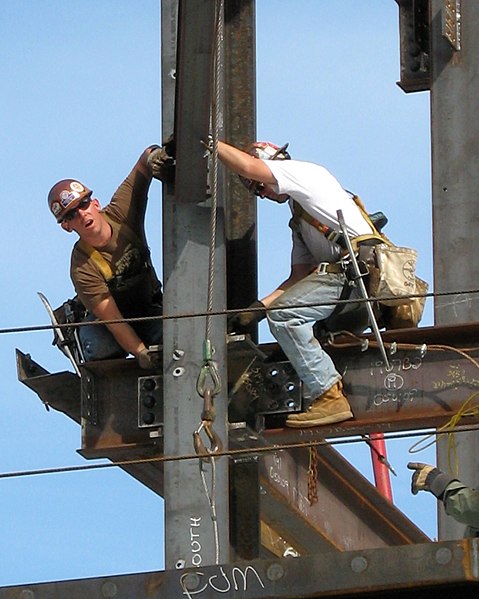A blue-collar worker is a working class person who performs manual labor or skilled trades. Blue-collar work may involve skilled or unskilled labor. The type of work may involve manufacturing, warehousing, mining, excavation, carpentry, electricity generation and power plant operations, electrical construction and maintenance, custodial work, farming, commercial fishing, logging, landscaping, pest control, food processing, oil field work, waste collection and disposal, recycling, construction, maintenance, shipping, driving, trucking, and many other types of physical work. Blue-collar work often involves something being physically built or maintained.
A manual laborer at work in Barquisimeto, Venezuela
A welder making boilers at the Combustion Engineering Company in Chattanooga, Tennessee in June 1942. Despite their name, blue-collar workers do not always or typically wear blue shirts.
Workers constructing a photovoltaic system in Zugspitze, Germany
A textile factory outside Dhaka, Bangladesh
The working class, or in Marxist terms, the proletariat, includes all employees who are compensated with wage or salary-based contracts. Working-class occupations include blue-collar jobs, and most pink-collar jobs. Members of the working class rely exclusively upon earnings from wage labour; thus, according to more inclusive definitions, the category can include almost all of the working population of industrialized economies, as well as those employed in the urban areas of non-industrialized economies or in the rural workforce.
Construction workers, commonly regarded as working class, at work at Massachusetts General Hospital in Boston
Working class life in Edwardian St Ives in Cornwall, England
Striking teamsters battling police on the streets of Minneapolis, Minnesota, June 1934
Communist conception of class society. The drawing was based on a leaflet of the "Union of Russian Socialists" 1900/01.








